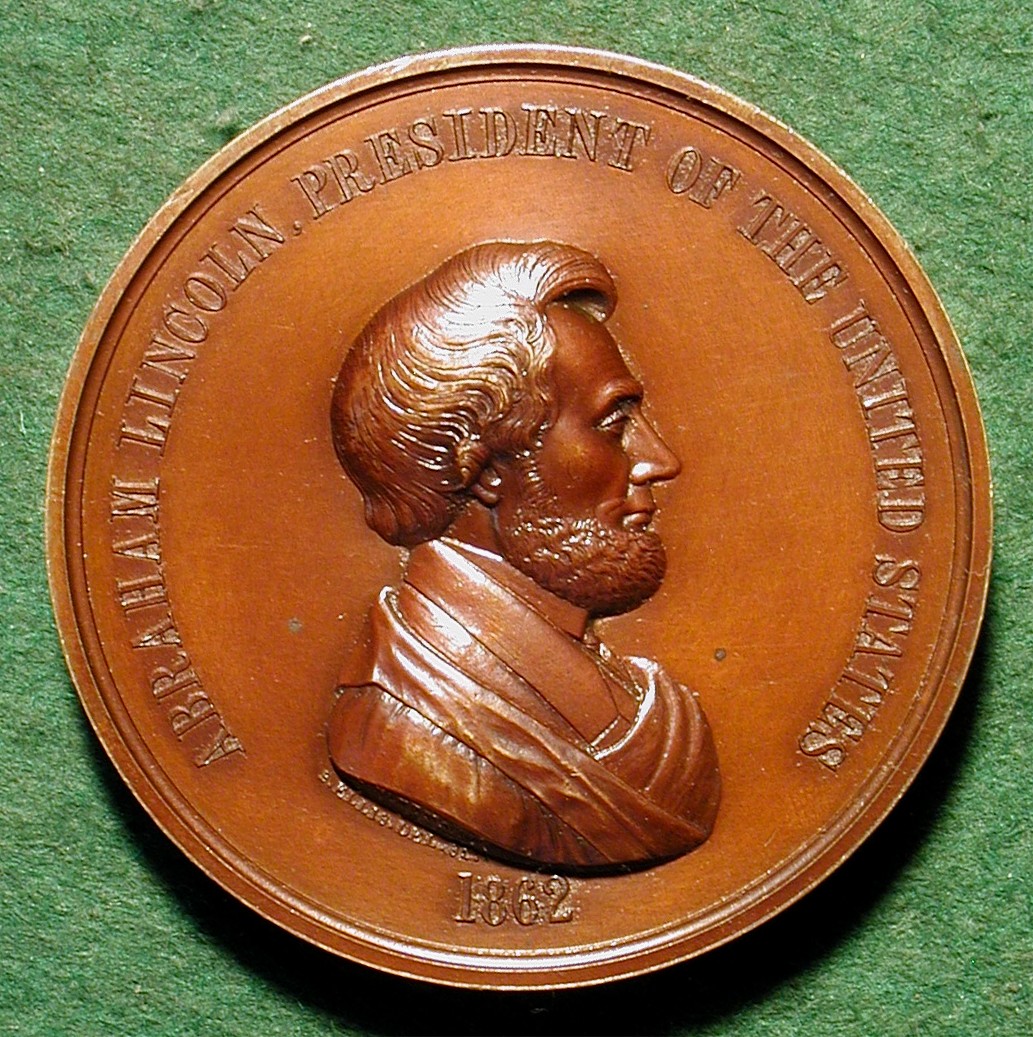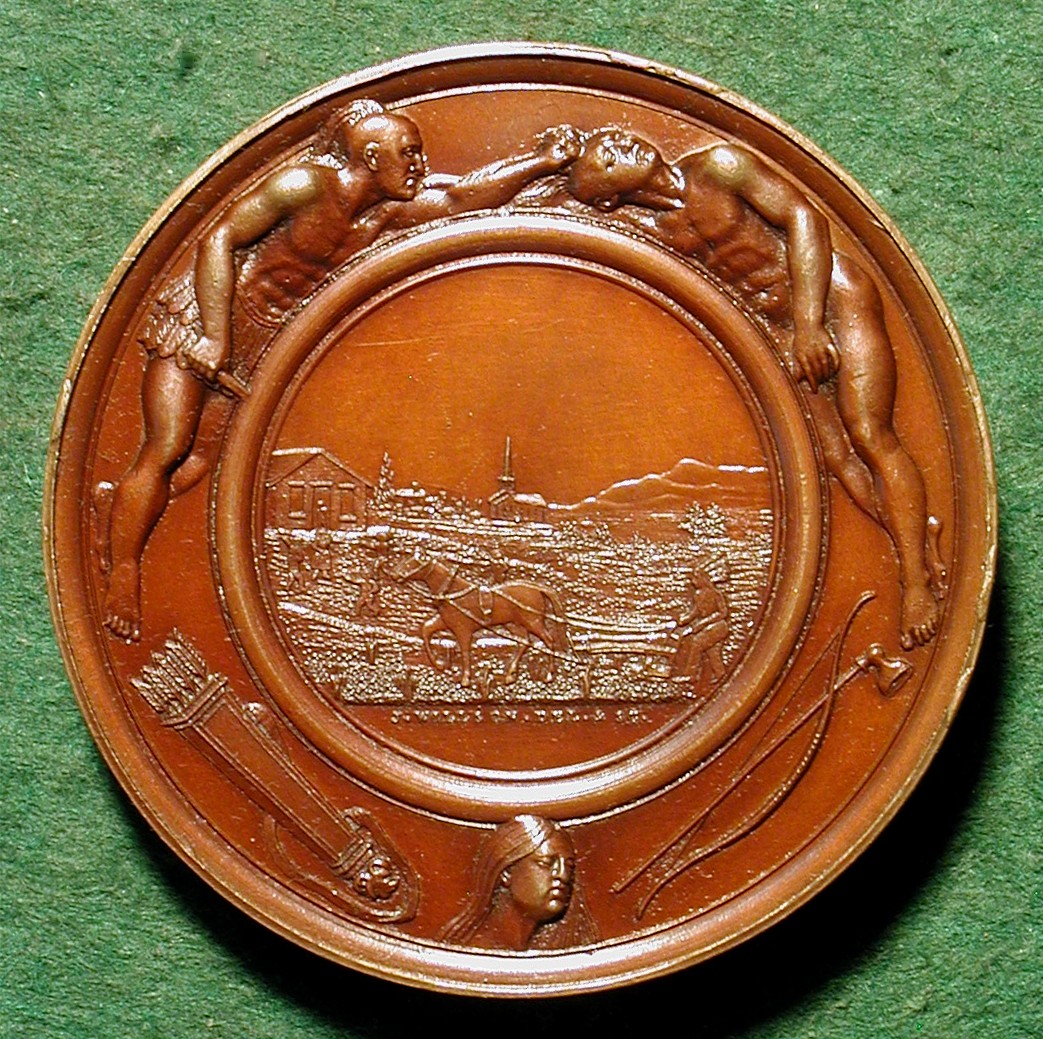|
ABRAHAM LINCOLN INDIAN PEACE MEDAL by Salathiel Ellis (Obv.) / Joseph
Willson (Rev.): USA, 1862, Bronze, 63 mm Abraham Lincoln (1809 – 1865) was the 16th President of the United States, serving from March 1861 until his assassination in April 1865. He is best remembered as having issued the Emancipation Proclamation, which ended slavery, and as being Commander in Chief during the American Civil War, a devastating war that nonetheless preserved the Union. The reverse of this medal is similar to that made by Willson for the James Buchanan Indian Peace medal. At some point the original reverse die broke and a new one, without Willson’s name was made. As this example is signed, the reverse was struck from the original die. Depicting the Indian wearing a headdress is incongruous, for as Jaeger and Bowers point out "the Sioux were the only tribe to wear this type of headgear, and only on ritual occasions or when riding into battle." The children playing baseball is probably one of the earliest medallic representations of our national pastime. The Lincoln Indian Peace medal was voted #57 in Whitman’s listing of the 100 Greatest American Tokens and medals. The official list of medals for sale by the US Mint showed only the 75 mm specimen Lincoln Indian Peace medal being offered to the public. Smaller medals, such as the example shown here, were only occasionally available (Levine). LINK to Medallic History of Slavery: Racial Oppression as Chronicled by Historical and Commemorative Medals(by Benjamin Weiss) |
|

